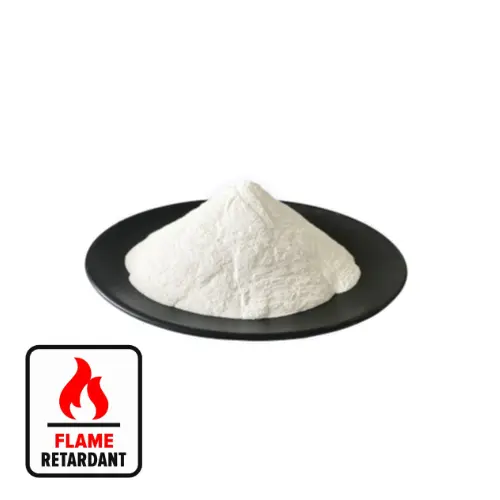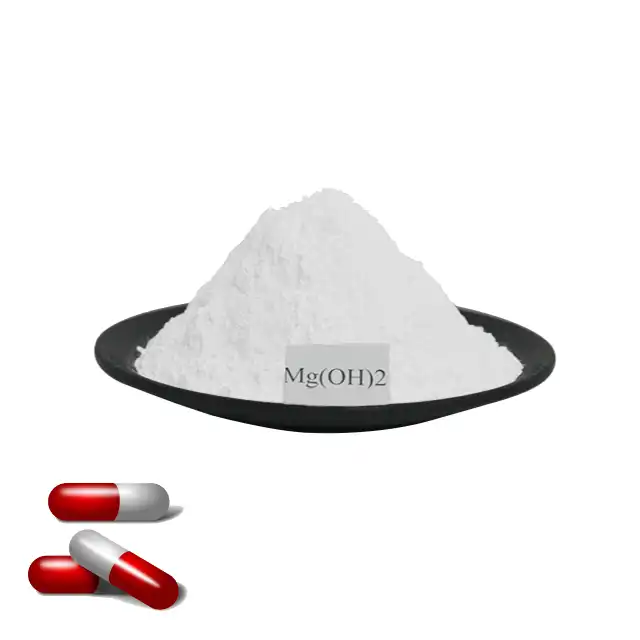Description

China is a big country in terms of salt lake resources, and salt lakes are rich in potassium, sodium, magnesium and other resources. Taking Qinghai Dongtai Jininger Salt Lake as an example, the reserves of potassium chloride have been identified to reach 18.28 million tons, sodium chloride 84 million tons and magnesium chloride 70 million tons. Potassium, sodium resources development and utilization of better, mature technology, while China’s salt lake magnesium resources development and utilization is still in the primary stage, raw material products and low-grade products more, high-grade, functional products less, forming a low-end product exports, high-end products import situation.
Magnesium hydroxide as a green and environmentally friendly flame retardant products, with flame retardant, smoke and filler and other multiple functions, increasingly favored by people. The shape and size of magnesium hydroxide has a great impact on its application performance, different shape of magnesium hydroxide price difference. Compared with hexagonal flake magnesium hydroxide flame retardant, fiber magnesium hydroxide can enhance the impact resistance of polymer materials, with flame retardant, reinforcing, toughening in one of the characteristics. Needle or rod magnesium hydroxide can significantly increase the axial stress of fiber materials. In addition, rod-shaped magnesium hydroxide is also a precursor for the preparation of rod-shaped magnesium oxide, which is a high-end electronic product. Therefore, the preparation of special morphology of magnesium hydroxide using salt lake brine is a way of efficient utilization of magnesium resources, which can broaden the application field of magnesium resources and improve the economic value of magnesium resources.
There are many reports on the preparation methods of hexagonal flake magnesium hydroxide, while the preparation of rod-shaped magnesium hydroxide is rarely reported in the literature. Zhang Bo prepared rod-shaped magnesium hydroxide by hydrothermal method using alkaline magnesium chloride as precursor, which requires high temperature and pressure. Li Zhenxing used magnesium chloride and sodium hydroxide as raw materials, firstly synthesized flaky magnesium hydroxide, and then treated with magnesium chloride and sodium hydroxide solution successively to obtain rod-shaped magnesium hydroxide, which has many processes, complicated operation and high cost. Wang Baohe used rod-shaped alkaline magnesium chloride as raw material, and used polyethylene glycol as template to prepare rod-shaped magnesium hydroxide by direct precipitation, and calcined to obtain rod-shaped magnesium oxide; Long Xu used magnesium acetate as raw material to form a one-dimensional nanocellular structure in PVP/glycol solution, and used the micellar structure as a soft template for nano-functional materials, and synthesized polycrystalline, higher aspect ratio magnesium hydroxide nanofilaments and nanorods using the low-temperature reflow method. . These processes use surfactants as template agents, and surfactant cleaning is difficult and residues can contaminate the product.
Content of the invention:
The purpose of the present invention is to provide a method of preparing rod-shaped magnesium hydroxide from brine of a salt lake, the method has a simple process, the required process cost is low, the production process does not need to add any surfactant, the whole process can effectively avoid environmental pollution, and realize the comprehensive utilization of magnesium resources from brine of a salt lake.
The technical program of the present invention:
Salt lake brine after the extraction of potassium, lithium and other elements as raw materials, concentration and crystallization of magnesium chloride hydrochlorite, the crystallization of magnesium chloride hydrochlorite dissolved in water made of magnesium chloride solution, through the ammonia for magnesium precipitation reaction, when the pH value reaches 7-8, stop through the ammonia, in 30-50 ℃ under the reaction of 0.5-2 hours, and then aging, filtration and get alkaline magnesium chloride and magnesium precipitation mother liquor; alkaline magnesium chloride dispersed in a mixed solution of ethanol and water to get the alkaline magnesium chloride. The basic magnesium chloride is dispersed in a mixed solution of ethanol and water to get the alkaline magnesium chloride suspension, adding sodium hydroxide to further precipitate to get the rod magnesium hydroxide; filtration and separation to get the magnesium precipitation mother liquor, through the replenishment of aqueous magnesium chloride stone recycling for the precipitation of alkaline magnesium chloride, but with the concentration of ammonium chloride in the precipitation of magnesium mother liquor enriched, then it is necessary to be sent to the ammonia evaporation process, the ammonia evaporation with lime, the ammonia generated recycling for the next batch of precipitation of alkaline magnesium chloride, and by-production of calcium chloride;
The magnesium content of the brine described in the present invention is not less than 93.4g/L.
The water magnesium chloride stone described in the present invention is obtained by concentrating the brine of the salt lake and crystallizing it at one time. (i.e. the obtained water magnesium chloride stone does not need to be purified, unlike some processes in the prior art that require the use of recrystallization to purify the water magnesium chloride stone).
This invention into the ammonia for magnesium precipitation reaction process, ammonia: magnesium molar ratio control for 1:5 to 1:4.
The concentration of said magnesium chloride solution is 3-5 mol/L during the passage of ammonia gas for sinking alkaline magnesium chloride reaction of the present invention.
The aging described in the present invention is static aging in a water bath at 45-55°C for 36-72 hours.
When the cumulative concentration of ammonium chloride in the magnesium precipitation mother liquor is ≥ 218g/L, it needs to be sent to the ammonia evaporation process.
Said ethanol and water volume ratio ranges from 3:1 to 10:1.
The specific operating steps of the present invention are as follows:
1) The brine of the salt lake after extracting potassium, sodium and lithium, which has a magnesium content of 93.4g/L and a specific gravity of 1.28g/mL, is evaporated and concentrated at 118°C to a specific gravity of 2.30g/mL, and then held at a temperature for 2-3 hours, and then filtered while still hot, cooled to room temperature, and precipitated aqueous magnesium chlorite by crystallization.
(2) dissolve the aqueous magnesium chloride obtained in step 1) in water, formulate a solution of magnesium chloride with a concentration of 3-5 mol/L, pass ammonia to carry out magnesium precipitation reaction with stirring, and the molar ratio of ammonia: magnesium is controlled to be 1:5 to 1:4, and when the pH value reaches 7-8, stop passing ammonia and react at 30-50°C for 0.5-2 hours, and then transfer it to a 50°C water bath for static aging for 36-72 hours, and then filter it. Obtain alkaline magnesium chloride and precipitated magnesium mother liquor.
3) Prepare a mixed solution of ethanol and water so that the volume ratio of ethanol to water is 3:1.
4) Disperse the alkaline magnesium chloride obtained in step 2) in the mixed solution of ethanol and water prepared in step 3), start stirring, add 3 mol/L NaOH solution dropwise so that the molar ratio of alkaline magnesium chloride to sodium hydroxide is 1:1.5, and react for 1-2 hrs at 30-40°C, filter, wash, and dry to obtain the rod-shaped magnesium hydroxide.
(5) The magnesium precipitation mother liquor obtained in step 2) is supplemented with aqueous magnesium chloride, formulated into a magnesium ion concentration of 3-5 mol/L solution, return to step 2) precipitation of basic magnesium chloride; when the ammonium chloride concentration of the magnesium precipitation mother liquor obtained in step 2) ≥ 218g/L, it is necessary to be sent to ammonia evaporation tanks to use lime to steam ammonia, the ammonia produced to return to the magnesium precipitation in step 2), ammonia is recycled.
6) The mother liquor after ammonia evaporation is evaporated, concentrated and crystallized to obtain calcium chloride crystals.
The advantages and positive effects of the present invention are:
The raw material used in this invention is the old brine discharged after the production of potash fertilizer, and the brine after lithium adsorption by ion exchange, the magnesium ion concentration reaches 93.4g/L, the specific gravity is 1.28g/mL, and the raw material source is widely available. The salt lake brine after lithium extraction is used to get magnesium hydrochlorite by concentration and cooling crystallization, and after ammonia precipitation and aging, the magnesium hydrochlorite is transformed into rod-shaped alkaline magnesium chloride, and the high value-added rod-shaped magnesium hydroxide is prepared by further precipitation with sodium hydroxide, which solves the problem of efficient use of magnesium resources from salt lake brine, and improves the ecological environment of the area where potash is extracted. The magnesium hydroxide obtained has large particles, good filtration performance, easy washing, and is conducive to the separation and removal of impurities. The precipitated magnesium mother liquor obtained by this invention is recycled to enrich ammonium chloride and recover ammonia by lime ammonia evaporation method. The magnesium precipitation rate of this invention reaches more than 90%, the ammonium chloride in the magnesium precipitation mother liquor is recovered with cheap lime, ammonia is recycled, and calcium chloride is by-produced at the same time, which is economically beneficial, and there is no environmental pollution in the production process.
Application of magnesium hydroxide in rod form



